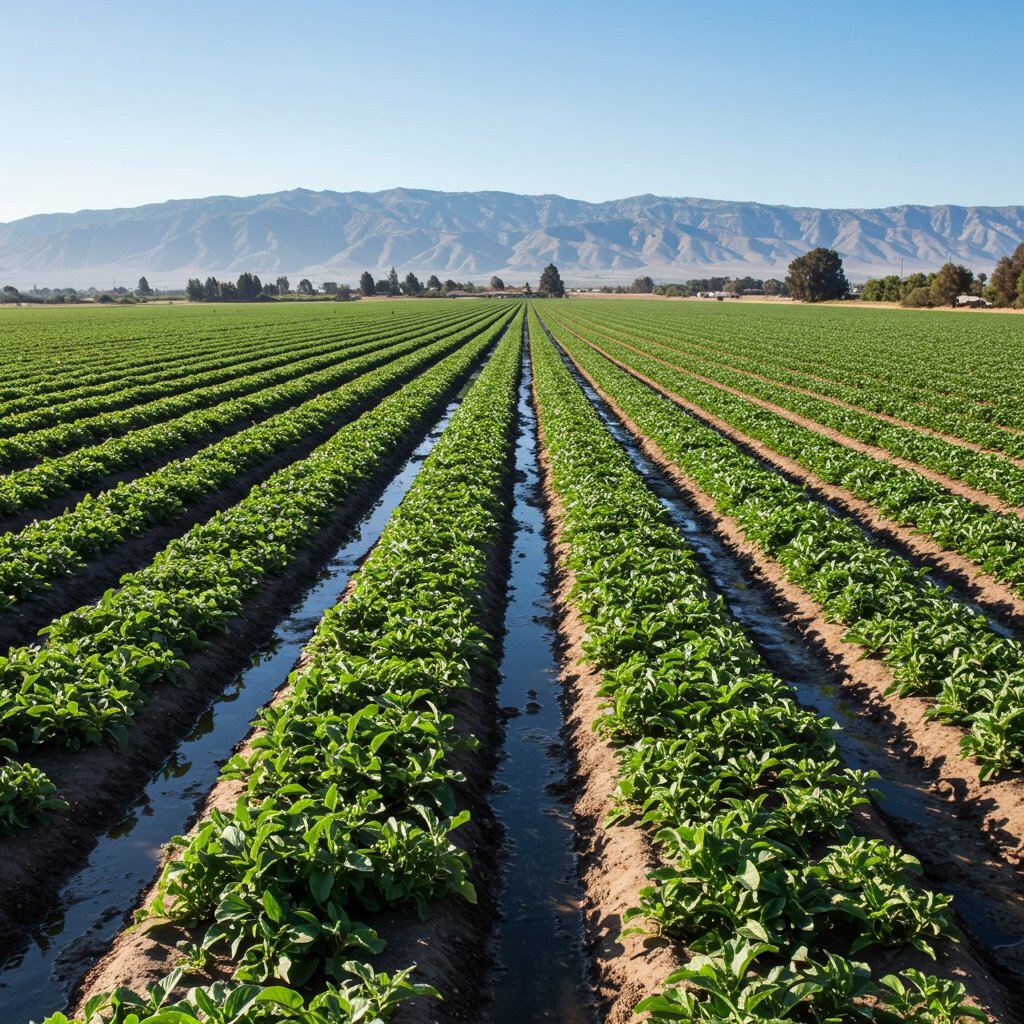California Farms Navigate Demanding New Water Efficiency Mandates
SACRAMENTO, CA – California’s vital agricultural sector, a cornerstone of both the state and national food supply, is currently navigating the complex implementation phase of sweeping new water efficiency requirements. The recently enacted Assembly Bill 1234 (AB 1234), spearheaded by the California Department of Food and Agriculture (CDFA), marks a significant policy shift aimed at conserving the state’s increasingly strained water resources. The legislation imposes rigorous new mandates requiring substantial reductions in water usage for a range of key specialty crops across California. This move comes as the state continues to confront the realities of persistent drought cycles and the long-term impacts of climate change on water availability.
At the heart of AB 1234 is a specific, quantitative target: farmers growing designated specialty crops must demonstrate a 15% improvement in water efficiency per acre-foot by the year 2028. This ambitious goal is set against a relatively short timeline, demanding rapid adaptation from agricultural operations that have historically relied on established irrigation practices. The legislation’s focus on specialty crops directly impacts some of California’s most iconic and economically significant commodities, particularly sectors critical to West Coast cuisine and global markets, such as avocado and almond production. These crops, often grown in regions facing significant water challenges, represent a substantial portion of California’s agricultural output and economic value.
Industry Concerns Mount Over Feasibility and Economic Impact
The introduction of such stringent requirements within a compressed timeframe has understandably generated significant concern within the agricultural community. Leading agricultural organizations, including the influential California Farm Bureau Federation, have been vocal in expressing serious reservations regarding the practical feasibility and potential economic repercussions of meeting the mandated three-year timeline. Their concerns stem from the considerable investment and operational changes required to achieve a 15% efficiency gain, which may involve adopting advanced irrigation technologies, altering cultivation practices, or even making difficult decisions about crop mix or acreage.
“Achieving a 15% efficiency gain across diverse farming operations, especially within just a few years, presents immense practical and financial hurdles for our members,” stated a spokesperson for the California Farm Bureau Federation during a recent industry workshop. “While farmers are committed to sustainable practices, the speed and scale of this mandate raise serious questions about viability for many family farms.” These concerns highlight the tension between necessary environmental goals and the economic realities faced by growers operating on tight margins.
Official Guidance Released, Initiating Urgent Discussions
Adding to the urgency, official guidance documents detailing the compliance protocols and methods for measuring and reporting water efficiency were released by the CDFA on March 5th, 2025. The release of these documents served as the official trigger, initiating a period of urgent discussion and strategic planning among growers and food industry stakeholders across the state. These documents are intended to provide clarity on how farmers will be required to measure their baseline water usage, calculate their efficiency improvements, and report their progress to the state.
The CDFA has indicated that the guidance documents are designed to offer flexibility where possible, acknowledging the diverse conditions and practices across California’s varied agricultural landscape. However, the core requirement of a 15% efficiency improvement by 2028 remains firm. Farmers are now poring over the detailed guidelines, attempting to understand the specific metrics and reporting mechanisms they will need to implement. This process involves assessing their current irrigation systems, water sources, and crop management techniques to identify potential areas for improvement.
Operational Adjustments and Potential Consumer Impacts
The operational adjustments required to meet the mandate are expected to be substantial for many farms. This could include significant capital investments in state-of-the-art precision irrigation systems, such as drip or micro-sprinkler technology, that deliver water more directly to plant roots and reduce evaporation. It may also necessitate changes in planting density, soil management practices to improve water retention, or the adoption of new crop varietals that are more drought-tolerant or require less water. For some operations, particularly smaller farms with limited capital, these investments could prove challenging.
The potential economic impact extends beyond the farm gate. Increased costs associated with implementing water-saving technologies and practices could potentially be passed on to consumers. This could lead to price increases for California’s highly sought-after specialty crops, including avocados, almonds, and other produce. Such price shifts could affect not only consumers within California and the United States but also international markets that rely on California’s agricultural exports, potentially impacting the affordability of key ingredients in West Coast cuisine and beyond.
Looking Ahead: Collaboration and Adaptation
The coming months will be critical as farmers and industry groups engage with the CDFA to better understand the nuances of the guidance documents and explore potential pathways to compliance. Discussions are underway regarding potential state support programs, such as grants or technical assistance, to help offset the costs of implementing required changes. The success of AB 1234 will ultimately depend on effective collaboration between state agencies, agricultural producers, and research institutions to develop and disseminate practical, economically viable water-saving solutions.
The mandate under AB 1234 represents a significant step in California’s ongoing efforts to secure its water future. However, its implementation highlights the complex challenges inherent in balancing environmental sustainability with agricultural productivity and economic stability. The state’s farmers are now tasked with the demanding challenge of innovating and adapting their practices at an unprecedented pace to meet these new requirements by 2028, shaping the future of California agriculture and potentially influencing food costs for years to come.


















